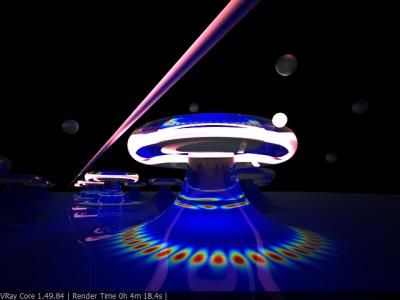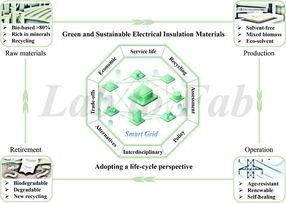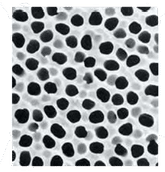Organizing dumbbells for nanotech devices
Bridging the gap between nanoscience and nanotechnology
Advertisement
A team of chemists from France, Italy, Spain, the UK, and the US are working together to bridge the gap between nanoscience and nanotechnology. They have now devised a method that could allow them to organize tiny molecular machines on a surface and so build devices that pack in thousands of times as many switching units, for instance, than is possible with a conventional silicon chip. Chemist Fraser Stoddart, now at the University of California Los Angeles, and his co-workers have designed and made numerous molecules based on hanging ring-shaped molecules on other chain-like molecules and loops. By incorporating functional chemical groups along the length of the chain or around these loops, they have shown that it is possible to make the molecular beads switch between these various functional groups using heat, light, or electricity. The ultimate aim of creating such molecular-scale devices is to use them as switching units or logic gates in a future computer based on molecules instead of silicon chips. Before that will be possible, however, the nanoscientists must find a way to organize arrays of these molecules on a surface so that input and output connections can be made between the molecules and the outside world. Stoddart and colleague Alberto Credi of the University of Bologna, Italy, and co-workers at the University of Birmingham, UK, the University Paul Sabatier, Toulouse, France, and the University of Valencia in Spain recognize that in order to exploit their molecular machines they will need to find a way to organize them at interfaces, deposit them on functional surfaces, or immobilize them into membranes or porous materials. This will allow the molecular machines to work together and to be "addressed" on the nanometer scale. The researchers believe that modifying the surface of an electrode to incorporate an organized layer of molecular machines could be the key to success. The team reports in the current issue of Advanced Materials how they have recently succeeded in applying an incredibly thin layer, just a few molecules thick, of a particular molecular machine to a glass surface. The molecular machine in question is a switchable rotaxane-a ring-shaped molecule held on a short chain by two blocking groups, making it resemble a dumbbell with a collar around the handle. A special technique was used to make thin layers of this dumbbell-shaped component in solution on a glass slide coated with ITO (indium tin oxide). By using two solutions-one containing the dumbbells and the other a soapy surfactant compound-the researchers were able to force the molecules to organize themselves because of electrostatic repulsion and attraction between the surfactant, the molecules, and the surface, until ultimately they became attached with the same orientation to the ITO layer on the glass slide. The researchers then tested their thin layers of dumbbell molecules to see whether they would work as planned. They found that the thin film exhibited a reversible switching behavior when exposed cyclically to an acid and then a base. This, they explain, demonstrates that the thin film is capable of transducing a chemical input signal-the acid or base-into an electrical output signal. This bodes well for interfacing other molecular machines in a similar way. There is, however, a puzzle that remains unsolved in this particular experiment. The team's other molecular machines have an obvious switching capacity between two functional units on the chain or loop, as mentioned previously. However, there are no functional units on the dumbbell, so there is actually nothing to switch. The researchers are still puzzling over how the switching they observe takes place in the dumbbell molecules. Ultimately, control using a light source or electricity will be required before such layers will be useful in the development of molecular computers, but this first small step to organizing molecular machines could lead to the required breakthrough. Original publication: J. F. Stoddart et al.; "Towards Organization of Molecular Machines at Interfaces: Langmuir Films and Langmuir-Blodgett Multilayers of an Acid-Base Switchable Rotaxane"; Advanced Materials 2006, 18, No. 10, 1291-1296.































































